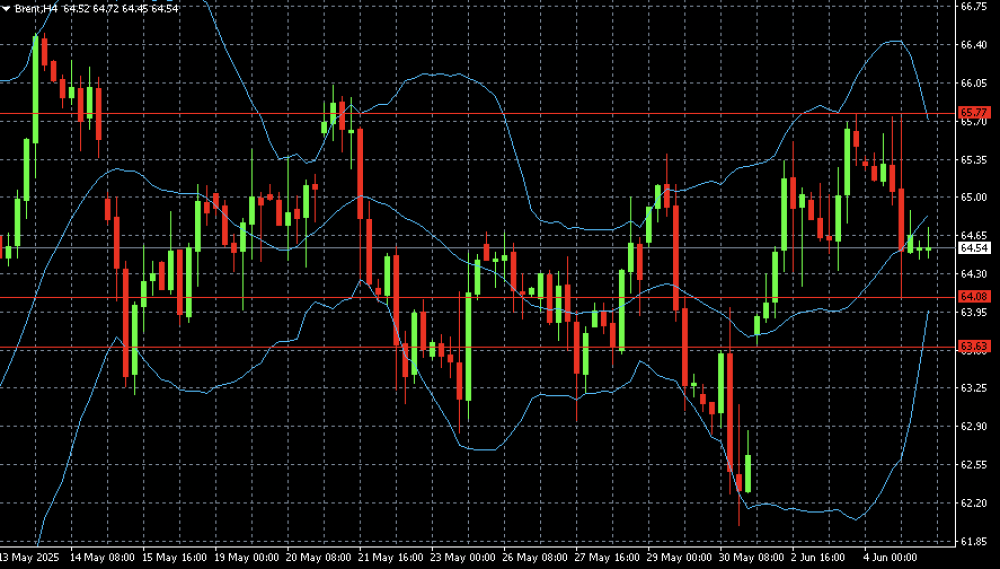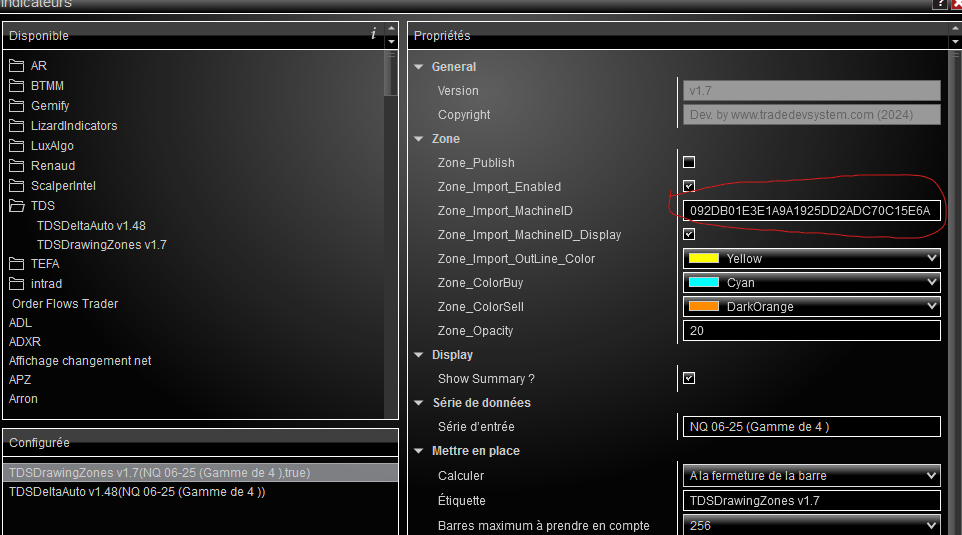[b]Date: 5th June 2025.[/b]
[b]ECB Rate Cut Expected Today: Inflation Drops Below 2% Target as Global Markets React.[/b]
European Central Bank Poised for Second Rate Reduction in 2025.
Financial markets are positioning for another interest rate reduction from the European Central Bank during today's highly anticipated monetary policy announcement. This potential move comes as eurozone inflation has fallen below the central bank's target threshold for the first time in months.
May Inflation Data Strengthens Case for Monetary Easing
Recent economic indicators have reinforced expectations for accommodative monetary policy across the eurozone. Consumer price inflation unexpectedly declined to 1.9% annually in May, representing a significant drop from April's 2.2% reading. This figure not only fell short of economist predictions of 2.0% but also marked the first instance of inflation dipping below the ECB's benchmark target since September 2024.
The surprising inflation deceleration reflects broader economic headwinds, including business uncertainty stemming from international trade tensions and subdued consumer spending patterns. These factors have collectively undermined pricing power across multiple economic sectors.
Core inflation metrics, which exclude volatile energy and food components, similarly demonstrated cooling trends. The measure retreated to 2.4% in May from 2.7% the previous month, falling below analyst estimates of 2.5%. Monthly core price increases registered a modest 0.1%, signalling persistent disinflationary pressures.
Recent ECB Policy Context
The central bank previously implemented a 25 basis point rate reduction during its April meeting, lowering the deposit facility rate to 2.25%. Market participants are now pricing in additional easing measures for June, though expectations for subsequent cuts remain divided. A potential pause in July as policymakers assess incoming economic data and inflation trajectories.
Markets are now pricing in another cut in June, though expectations for further easing beyond that remain uncertain. A potential pause in July is gaining traction, as the ECB evaluates incoming economic data and inflation dynamics.
Asian Markets Show Mixed Performance Amid Global Uncertainty
Regional Stock Performance Varies
Asian equity markets displayed divergent trends Thursday as Wall Street's recent momentum showed signs of fatigue following disappointing US economic reports. Futures contracts pointed lower while commodity prices experienced declines.
Japan's Nikkei 225 index retreated 0.2% to close at 37,658.46, while Australia's S&P/ASX 200 declined marginally by 0.1% to 8,535.10. Conversely, South Korea's Kospi index surged 2.1% to 2,829.48, buoyed by political developments as the country's new president, liberal politician Lee Jae-myung, assumed office with promises to reinvigorate North Korean dialogue and strengthen trilateral cooperation with the United States and Japan.
Hong Kong's Hang Seng index gained 0.9% to reach 23,856.54, while mainland China's Shanghai Composite remained essentially flat, declining less than 0.1% to 3,374.30.
US Market Reaction to Economic Data
Wednesday's US trading session concluded with mixed results as major indices responded to weaker-than-anticipated economic indicators. The S&P 500 finished virtually unchanged at 5,970.81, remaining 2.8% below its record high. The Dow Jones Industrial Average fell 0.2% to 42,427.74, while the Nasdaq composite advanced 0.3% to 19,460.49.
Bond markets experienced more pronounced movements as Treasury yields declined sharply following disappointing economic updates. One report indicated contraction in the US services sector, contradicting economist expectations for growth. The Institute for Supply Management survey revealed that tariff-related uncertainty was hampering business forecasting and planning capabilities.
A separate ADP employment report suggested significantly weaker private sector hiring than anticipated, potentially foreshadowing challenges in Friday's comprehensive Labor Department jobs report—one of Wall Street's most closely monitored monthly releases.
Federal Reserve Policy Implications
Trump Administration Pressure on Monetary Policy
The weaker economic data prompted increased speculation about Federal Reserve rate cuts later this year. President Donald Trump publicly criticized Fed Chair Jerome Powell on his Truth Social platform, stating: "'Too Late' Powell must now LOWER THE RATE. He is unbelievable!!!"
The Federal Reserve has maintained its current rate stance throughout 2025 after implementing cuts through late 2024. The central bank's cautious approach reflects an ongoing assessment of Trump administration tariff policies and their potential economic and inflationary impacts. While lower rates could stimulate economic activity, they might also contribute to inflationary pressures.
International Trade Developments
EU-US Trade Negotiations
Trade tensions continue influencing global market sentiment as investors seek clarity on tariff policies. The European Union's chief trade negotiator, Maroš Šefčovič, met with US Trade Representative Jamieson Greer during OECD meetings, though concrete agreements remain elusive.
Trump's steel and aluminium tariff increases took effect Wednesday, particularly impacting Canada and Mexico. Simultaneously, the administration requested ‘best offers’ from trading partners to prevent additional import levies scheduled for July implementation.
Global Diplomatic Efforts
International efforts to address trade uncertainties continue with Japan dispatching key negotiator Ryosei Akazawa for US discussions Thursday. Germany's new chancellor, Friedrich Merz, is also scheduled for Washington meetings as European leaders seek to minimize trade disruption.
Currency and Commodity Markets
Foreign Exchange Movements
Currency markets reflected ongoing uncertainty with the dollar index rising 0.1% to 98.879, partially recovering from Wednesday's 0.5% decline. The dollar strengthened 0.2% against the yen to 143, while the euro remained relatively stable at $1.1411 following a 0.4% gain in the previous session.
Commodity Price Action
Precious metals and energy markets faced pressure as spot gold declined 0.2% to $3,367.30 per ounce, paring previous gains. Oil prices retreated following US inventory builds and Saudi Arabia's price cuts for Asian crude buyers, with US crude falling 0.5% to $62.58 per barrel.
Australian Economic Indicators
Consumer Spending Concerns
Australian economic data revealed persistent consumption challenges despite monetary easing efforts. Household spending increased only marginally in April, indicating consumption continues lagging income growth despite lower borrowing costs and reduced inflation.
Given that household spending represents approximately 52% of Australia's GDP, weak consumption significantly impacted first-quarter growth, which expanded by just 0.2%. The Reserve Bank of Australia previously revised consumption forecasts downward when implementing a quarter-point rate cut to 3.85% in May, and may require further downgrades.
Market expectations suggest additional RBA easing as early as July, with rates potentially reaching 2.85% by early next year as policymakers address economic headwinds.
Market Outlook and ECB Guidance
Central Bank Communication Focus
Market participants view today's ECB rate cut as virtually certain, shifting attention to President Christine Lagarde's forward guidance regarding future policy direction. Executive Board member Schnabel may have gone on record to note her preference for unchanged rates, but the dovish camp has dominated the headlines over the past weeks. On top of that, preliminary inflation reports for June and updated inflation forecasts are likely to back the arguments of the likes of Villeroy, who continues to argue for even lower rates.
If the ECB fails to deliver a dovish statement today this could upset the equity markets as well as give the euro’s upward trend additional momentum.
Alternatively, in the less likely, but possible event that the ECB keeps rates steady, it could well deliver another cut in July, when the tariff outlook may be clearer. Either way, the hurdles to additional cuts are starting to get higher and Lane's focus on being agile on rates amid heightened uncertainty suggests that the ECB could make a quick turnaround, if and when the outlook changes.
The central bank's communication strategy will prove crucial as markets navigate competing forces of disinflationary pressures, trade policy uncertainty, and varying regional economic performance. Today's decision and accompanying guidance will likely influence global monetary policy expectations and market positioning heading into the summer months.
[b]Always trade with strict risk management. Your capital is the single most important aspect of your trading business.[/b]
[b]Please note that times displayed based on local time zone and are from time of writing this report.[/b]
Click [url=https://www.hfm.com/hf/en/trading-tools/economic-calendar.html][b]HERE[/b][/url] to access the full HFM Economic calendar.
Want to learn to trade and analyse the markets? Join our webinars and get analysis and trading ideas combined with better understanding of how markets work. Click [url=https://www.hfm.com/en/trading-tools/trading-webinars.html][b]HERE[/b][/url] to register for FREE!
[url=https://analysis.hfm.com/][b]Click HERE to READ more Market news.[/b][/url]
[b]Andria Pichidi
HFMarkets[/b]
[b]Disclaimer:[/b] This material is provided as a general marketing communication for information purposes only and does not constitute an independent investment research. Nothing in this communication contains, or should be considered as containing, an investment advice or an investment recommendation or a solicitation for the purpose of buying or selling of any financial instrument. All information provided is gathered from reputable sources and any information containing an indication of past performance is not a guarantee or reliable indicator of future performance. Users acknowledge that any investment in Leveraged Products is characterized by a certain degree of uncertainty and that any investment of this nature involves a high level of risk for which the users are solely responsible and liable. We assume no liability for any loss arising from any investment made based on the information provided in this communication. This communication must not be reproduced or further distributed without our prior written permission.








